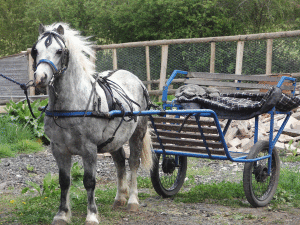Farriery – The craft of perfectly fitting shoes for your horse
Farriers – Custom shoemakers for your horse
Experts recommend that you shoe working horses, as it protects the hoof from general wear and tear, cracking and splitting. Some people prefer to save on the cost of shoeing, and have their horses bare foot, but this can only be done with strong healthy hooves and limits the amount of work that can be done on the road to a minimum.
Generally shoes are made of iron, it heats well and can be shaped at hot temperatures and also effectively takes on the wear and tear of heavy work. Alternatives include plastic, winged shoes that are glued on. These are lighter, but more expensive and not often seen.
You cannot just pop into TESCO or ASDA to buy horse shoes, a registered expert known as a farrier has to come and fit your horses shoes.
It is recommended that your farrier visits every four to six weeks to trim, and shoe your horse.
It is also important that your farrier is properly qualified, you can check his qualificatins, here are some to look out for; DipWCF or Diploma of the Worshipful Company of Farriers , FWCF or Fellowship of the Worshipful Company of Farriers. This is the highest quallification, and the mark of a profesional, AWCF or the Associateship of the Worshipful Company of Farriers .
First the farrier removes the dirt, and excess frog, and sole tissue, and clips the hoof wall. Once the hoof is the right shape and length, the iron shoes are heated and shaped and once they have cooled sufficiently they are fitted, and adjusted, then cooled and nailed on.
More details on hooves and hoof care can be obtained from your farrier, a knowledgeable person, or a good book.




Recent Comments